Partners in the Spotlight
Selected integrations
AXIS ACAP - Parquery in-camera
Fotokite - Parking & Traffic Surveys
Parquery works with ANY camera
Improving road and driver safety and comfort along the highways.
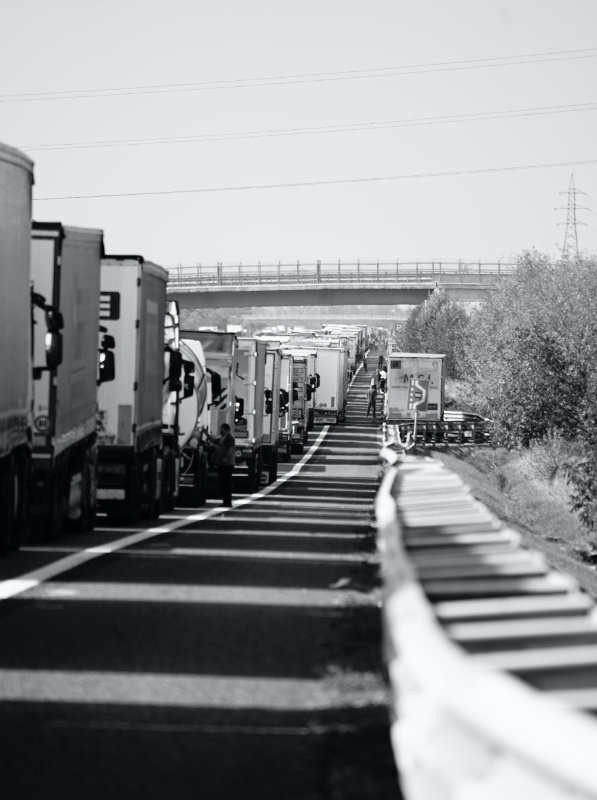
Truck drivers face a difficult challenge when on the road to deliver their cargo. It boils down to scarce parking along main traffic arteries, such as motorways and highways.
Tight schedules and insufficient parking make it difficult for a driver to find a suitable spot when needed. Drivers may be forced to find a rest place in a hurry and, thus, lead to search traffic, unsafe or unauthorized parking, or driving while fatigued, risking their own and others safety on the road.
When drivers are obliged to divert from designated truck parking to areas without infrastructure, it leads to search traffic, littering, increased noise and air pollution, and traffic congestion.
In addition, the lack of available truck parking leads to economic losses for the industry through increased travel time, fuel consumption, costs for detours and missed delivery windows, and direct lost compensation for truck drivers, costing them an average of $4,600 in the US (Source: American Transportation Research Institute (ATRI)).
The lack of parking spaces is often cited as the primary issue; however, a German study found unexpected variability in parking usage within short distances. One rest area may be fully occupied while a neighboring one is nearly empty.
So really, the crucial issue of the matter is real-time information on live availability.
Upgrading exisiting or new traffic cameras to parking sensors and receiving real-time information about available parking spaces with Parquery's. Use cases:
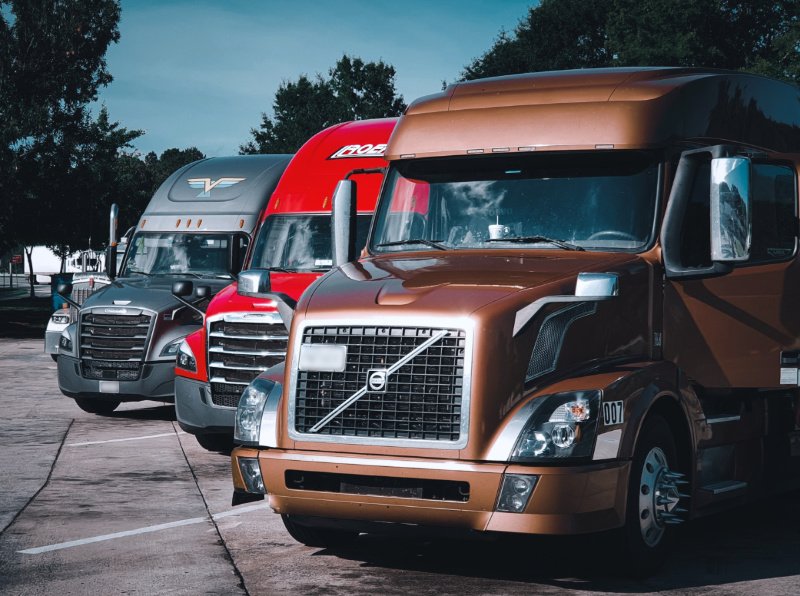
Effectively managing and allocating available parking spaces requires parking guidance systems with real-time availability and reliable forecasting.
Parquery's smart parking solution utilizes AI-powered cameras to monitor parking spaces 24/7, detect the presence of vehicles, and track dwell times.
What sets this solution apart are its quick and easy deployment - we can even use existing cameras - and its cost. This makes it an ideal choice for truckers' rest areas, which often already have cameras for security purposes. As a result, shortly after project kick-off, drivers can be guided to their spots cost-effectively and timely.

Photo: aleksandarlittlewolf on Freepik
Smart parking provides real-time information to drivers about available parking spots using dynamic guidance panels or smartphone apps. Additionally to live data, forecasting can determine the expected occupancy at arrival time. Hence, taking into account the journey time for rest areas that are farther away.
Therefore, enabling drivers to plan rest breaks more efficiently and reducing the risk of driving while fatigued. This benefits drivers, improves road safety, and reduces economic and environmental impact.
Technical challenges exist for camera-based truck parking due to the variety and range of trucks in terms of size and appearance. The height of the vehicles requires cameras to be mounted very high, and their positioning becomes crucial: A large truck soon hides a smaller vehicle when seen from the side (lateral / in profile).
However, our deep learning AI solution can adapt to different vehicle appearances – and indeed any object – with enough calibration or training data. Would you like to know more about how this works?
Parquery’s real-time smart parking solution has been tried and tested by road authorities in the US and Europe. A small selection of the several European countries who are currently piloting our solution. Contractual agreements do not allow us to list all.
The Ohio Department of Transportation (ODOT) is a state government agency responsible for the development and maintenance of the transportation infrastructure in Ohio, including highways, airports, and public transit systems.

ODOT’s truck rest areas are equipped with traffic monitoring cameras, which made it particularly easy and fast to deploy Parquery’s smart truck parking. It was simply a question of setting up our cloud servers to receive the cameras’ images and adapt the software to the local circumstances and the system was ready to go. Within a short period of time, drivers could see the live availability.
Roadside digital message boards show the number of available spots and guide drivers to vacant parking bays. The data is integrated with Parquery’s Application Programming Interface (API). The parking area ‘s main utilization are overnight rests, and some short pit stops at lunchtime.
Read the entire success story of 16 rest stop areas being monitored with Parquery.
The need, the solution, and the impact.
Read on
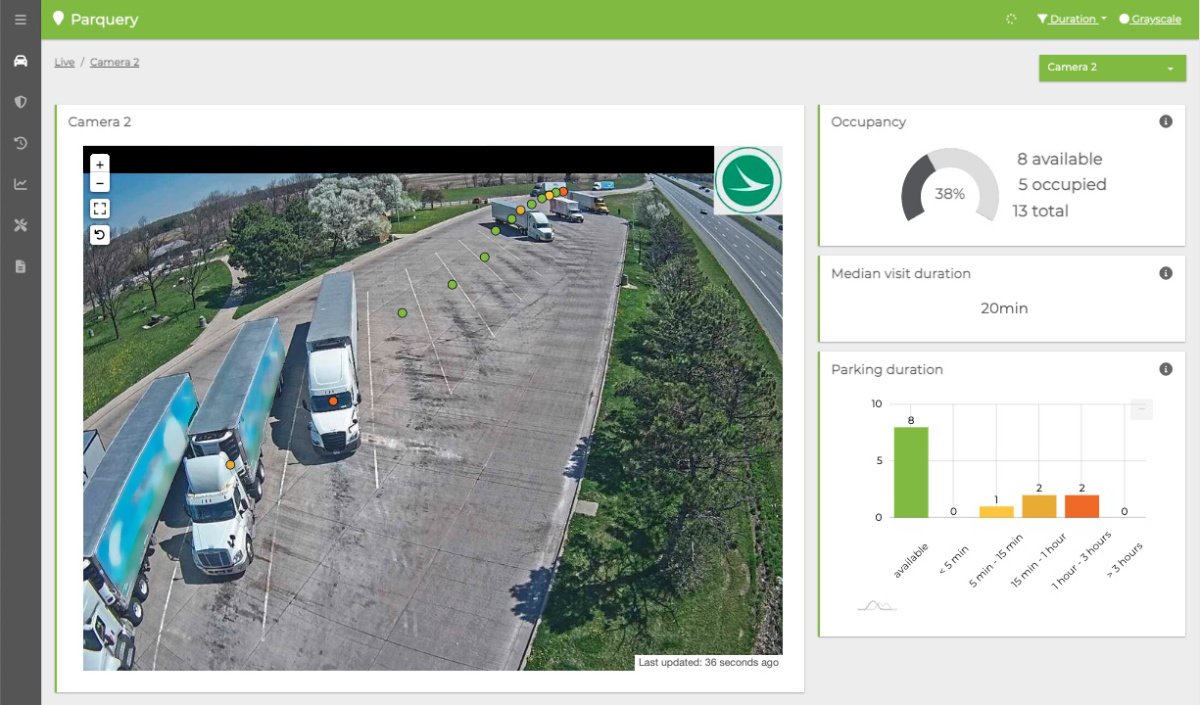
Existing cameras meant that the pilot project in Ohio could be set up in no time at all
The Austrian ASFINAG is a public infrastructure construction company responsible for the construction, maintenance, and operation of the Austrian motorway and expressway network.

They are piloting Parquery’s truck parking solution at one of their truck rest areas in southern Austria. Demand is highest during the night and on weekends, when a driving ban is in place for heavy goods vehicles (HGVs). The aim of this ban is to reduce noise and air pollution during the night, and to improve road safety. Rest areas are in high demand then, and effective signaling of vacant spots is crucial to the drivers.
Parquery’s interactive dashboard with onboard parking data analytics makes it easy to analyze the utilization, find patterns, issues, and potential for improvement.
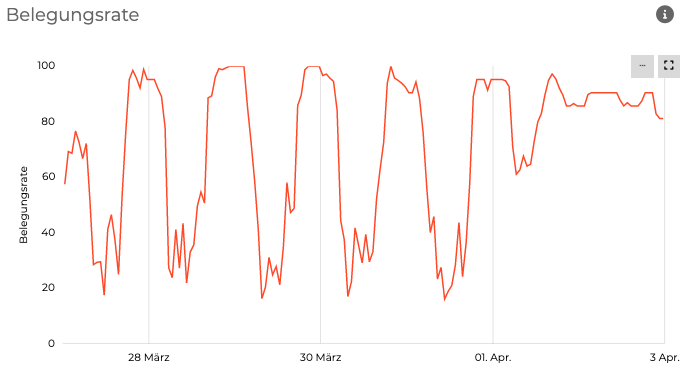
The demand peaks during the night and on weekends, when trucks are prohibited from driving
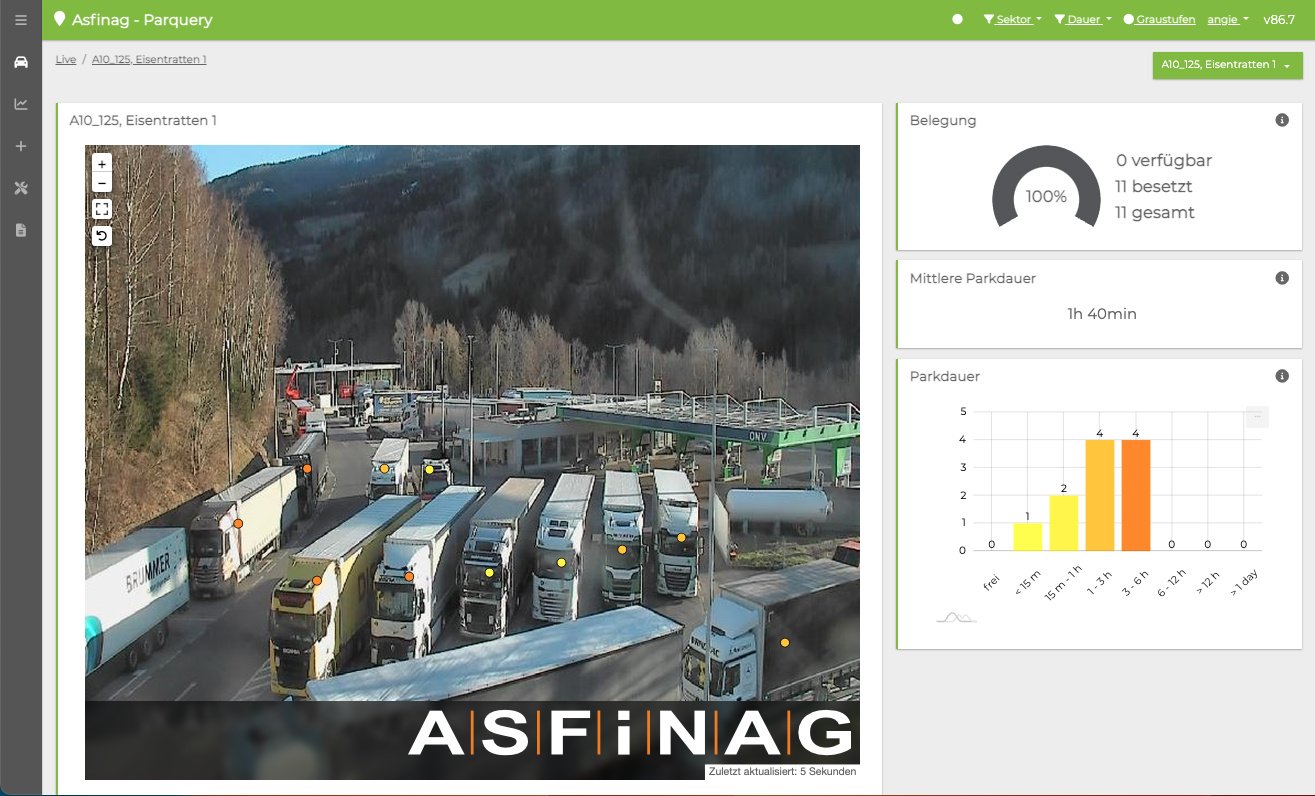
Existing traffic monitoring cameras are used for parking occupancy detection. Photo source: Asfinag Webcam
The Delaware Department of Transportation (DelDOT) manages the US state’s transportation infrastructure and safety programs, and provides travel information to the public.

Parquery has been working in partnership with WiseMoving Prime Technologies, a leading developer and provider of innovative technology-focused solutions for smart parking solutions in the US since early 2022.
Together, they have been using Axis cameras to monitor a truck stop operated by the Delaware Department of Transportation (DelDOT) since 2022. The truck stop in Smyrna, DE is located between Washington D.C and Philadelphia, PA. DelDOT integrated the real-time parking availability to inform truck drivers of vacant spots through DelDOT’s Integrated Travel Map and downloadable app.

Parquery's real-time smart parking solution has been piloted along US and European motorways. It is set apart from conventional solutions like ground sensors or induction loops:
Get in touch with us and we will be at your side.
If you need hardware, we work with a company near you that will take care of all the technical details, of buying and installing the right equipment, and that will be your local contact on-site.
If you have cameras already installed on site, you are good to go.
Would you like to resell our solution in your market or integrate it into your traffic or smart city platform? Call or email us and let's discuss the details.

Our main office is located in Geerenweg 2, CH-8048 Zurich, Switzerland
trucks [at] parquery.com
+41 44 501 39 19 (8:30am - 5:30pm CET)
Upon receiving your request, we will get back to you shortly.